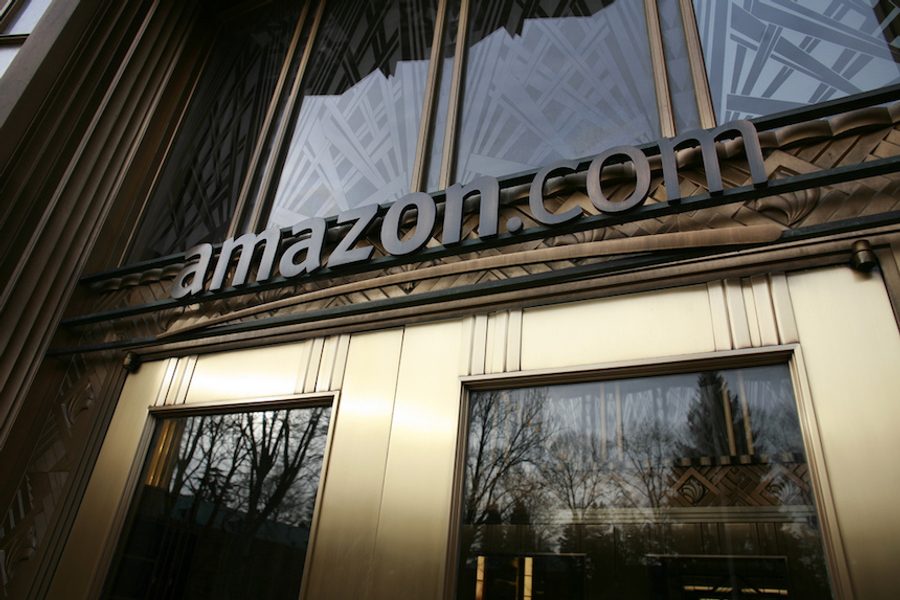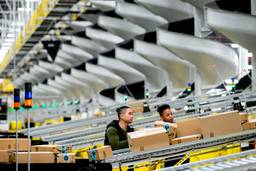Cities Scrambling to Attract Amazon Because It “Creates Jobs” Are Being Sold a Lie
David Dayen

Amazon has been astoundingly successful in getting state and local governments to pay for its worksites. The online retail giant has staff dedicated to securing local tax incentives, abatements and subsidies for placing its warehouses (dubbed “fulfillment centers”), totaling more than $1.1 billion since 2000. And for months, cities have engaged in an even more unseemly spectacle: promising billions to attract Amazon’s second headquarters. The losing bids will likely set the ransom rate Amazon can demand to locate its fulfillment centers in the future.
Until now, nobody has looked specifically at whether these giveaways are really worth the cost. A report from the Economic Policy Institute released on Thursday says emphatically that they’re not.
Using Bureau of Labor Statistics data, EPI researchers Ben Zipperer and Janelle Jones analyzed what happens to employment in a county once Amazon builds a fulfillment center. Though warehousing and storage jobs do increase, the net effect is close to nil, as new jobs are offset by losses elsewhere in the county. The findings mean that all the money poured into Amazon on the promise of job creation is essentially a waste. “It doesn’t increase overall private sector employment,” Jones, an economic analyst with EPI, tells In These Times. “No matter how much you slice this data, it’s just not there.”
The very idea of giving Amazon, one of the world’s richest companies, subsidies to attract a warehouse is distasteful to begin with. That’s especially true because Amazon Prime’s business model of delivering products to customers within 24 to 48 hours demands that the company place warehouses all over the country. Fulfillment by Amazon, a separate initiative where the company stores and ships products on behalf of third parties, also requires Amazon to build lots more warehouses to contain all those goods. Indeed, the EPI report shows that Amazon’s rise in fulfillment centers corresponds with its key announcements establishing Amazon Prime, and Fulfillment by Amazon. Prior to the launch of Amazon Prime in 2005, the company had three fulfillment centers; today it has 95.
“If your business model is getting things to people within 24 hours, you have to be everywhere,” Jones said. In other words, paying a company to locate a facility they have to build anyway makes no sense.
Nevertheless, politicians desperate to cut a ribbon and point to tangible job creation continually fight with their neighbors over how much cash to slather on Amazon and other companies. Such incentives constitute a longtime economic development strategy. That’s what makes the EPI report so useful, because it breaks down how the alleged job gains from such subsidies don’t pan out.
Researchers looked at 54 Amazon fulfillment centers in 34 counties. They measured back two years before the fulfillment center opened and two years afterward, controlling for population, local and national economic changes and job growth in surrounding areas.
The results showed that warehouse employment in a county with an Amazon fulfillment center goes up by around 30 percent within two years of the opening. That is expected considering how massive these fulfillment centers are. But overall net employment in that county barely budges when Amazon comes in.
The cumulative percent change two years after the opening, based on different samples of the data, ranges from -0.014 to 0.003 percent — numbers that might as well be zero. The finding “reinforces just how completely ineffective Amazon fulfillment center openings have been to providing any boost to overall local employment,” the report states.
Jones offered a couple hypotheses to explain the data. First, there may be displacement: When an Amazon fulfillment center comes in, competing businesses leave the area, competitors fold up shop or local companies lose workers to the warehouse. The other point is that warehouse employment represents an infinitesimal part of the overall labor force in the United States, and therefore cannot be a key driver of overall employment gains. Even in counties with an Amazon fulfillment center, warehouse jobs comprise 1.4 percent of total workers. So even a large increase in those warehouse jobs fails to move the needle on employment within a community, and can easily be snuffed out by displacement.
This is the opposite of the story Amazon tells: that bringing in a new fulfillment center will have knock-on effects across the country, increasing economic activity and creating new jobs. That just doesn’t happen according to the EPI data. “You would think it would be a stimulus, but that does not pick up in overall net new jobs,” Jones says.
Opening a fulfillment center also had little to no impact on average wages of warehouse workers, EPI found. A 2016 study from the Institute for Local Self-Reliance found that hourly wages at Amazon fulfillment centers are far below the typical warehouse worker, and employees work more hours to compensate.
The report suggests a better approach than effectively bribing companies to create local jobs: investing in people and public works . Handouts for economic development deprive cities and states resources for public investment. “Not only are you not getting new jobs, but you’re sacrificing long-term economic development from universal pre-kindergarten, or improving infrastructure,” Jones says. Cutting the ribbon on a new pre-K school or rail line or public broadband facility, in other words, makes a far bigger contribution to jobs now and in the future.
Indeed, it’s far more likely that businesses make decisions on where to locate based on a talented workforce and top-quality infrastructure than their tax rate. The Institute on Taxation and Economic Policy reported in 2013 that state and local taxes are only about 1.8 percent of a company’s cost of doing business. You cannot possibly lower the tax rate enough to supersede all the other factors. The giveaways are as unnecessary as they are ineffective.
The EPI report shows that the current model of economic development rests on a failed premise. Subsidizing companies to relocate does next to nothing to create jobs. Companies like Amazon don’t need the incentive, and don’t do much for the community – certainly nothing that would justify the expenditure of hundreds of millions of dollars. So when Amazon comes around seeking cash for jobs, cities and states should just tell them to stuff it.
Update:
Following publication, In These Times received the following comment from Amazon:
In addition to the 200,000 Amazon employees in the US, we know from 2016 data, which is more current than the EPI data, Amazon’s investments led to the creation of 200,000 additional non-Amazon jobs, ranging from construction jobs to healthcare industry positions. In fact, over the last five years, counties that have received Amazon investment have seen the unemployment rate drop by 4.8 percentage points on average, and in some areas, the rate has been lower than the state average.
In regions, such as California’s Inland Empire, the effects of Amazon’s $2 billion investment between 2012 and 2016 have resulted in creating an estimated 34,600 additional jobs. In similar regions across the US, such as Lehigh Valley, Fall River, Mass. and the Rust Belt, Amazon has created employment opportunities for employees who had been out of work due to industry closures or had little employment opportunities in their communities.
Amazon’s fulfillment center jobs are good jobs that offer competitive pay and comprehensive benefits, which include medical insurance, bonuses, 401(k) with 50 percent match, generous maternity and parental leave, and innovative programs like Career Choice that pre-pays 95% of tuition and associated fees for employees to get training or education for in-demand fields, whether they are applicable to Amazon or not. Our goal is to give employees the opportunity to learn new skills that can help an employee further build their career at Amazon or even in another industry.







